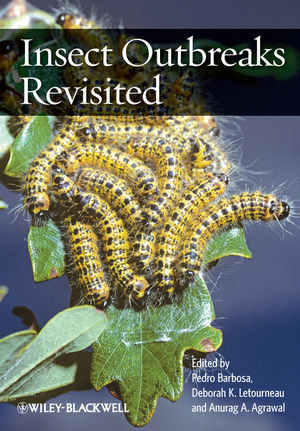

Most ebook files are in PDF format, so you can easily read them using various software such as Foxit Reader or directly on the Google Chrome browser.
Some ebook files are released by publishers in other formats such as .awz, .mobi, .epub, .fb2, etc. You may need to install specific software to read these formats on mobile/PC, such as Calibre.
Please read the tutorial at this link: https://ebookbell.com/faq
We offer FREE conversion to the popular formats you request; however, this may take some time. Therefore, right after payment, please email us, and we will try to provide the service as quickly as possible.
For some exceptional file formats or broken links (if any), please refrain from opening any disputes. Instead, email us first, and we will try to assist within a maximum of 6 hours.
EbookBell Team

0.0
0 reviewsThis important new book revisits a subject not thoroughly discussed in such a publication since 1988 and brings an international scale to the issue of insect outbreaks.
Insect Outbreaks Revisited is intended for senior undergraduate and graduate students in ecology, population biology and entomology, as well as government and industry scientists doing research on pests, land managers, pest management personnel, extension personnel, conservation biologists and ecologists, and state, county and district foresters.Content:
Chapter 1 Insect Herbivore Outbreaks Viewed through a Physiological Framework: Insights from Orthoptera (pages 1–29): Spencer T. Behmer and Anthony Joern
Chapter 2 The Dynamical Effects of Interactions between Inducible Plant Resistance and Food Limitation during Insect Outbreaks (pages 30–46): Karen C. Abbott
Chapter 3 Immune Responses and Their Potential Role in Insect Outbreaks (pages 47–70): J. Gwen Shlichta and Angela M. Smilanich
Chapter 4 The Role of Ecological Stoichiometry in Outbreaks of Insect Herbivores (pages 71–88): Eric M. Lind and Pedro Barbosa
Chapter 5 Plant?Induced Responses and Herbivore Population Dynamics (pages 89–112): Andre Kessler, Katja Poveda and Erik H. Poelman
Chapter 6 Spatial Synchrony of Insect Outbreaks (pages 113–125): Andrew M. Liebhold, Kyle J. Haynes and Ottar N. Bjornstad
Chapter 7 What Tree?Ring Reconstruction Tells Us about Conifer Defoliator Outbreaks (pages 126–154): Ann M. Lynch
Chapter 8 Insect?Associated Microorganisms and Their Possible Role in Outbreaks (pages 155–174): Yasmin J. Cardoza, Richard W. Hofstetter and Fernando E. Vega
Chapter 9 Life History Traits and Host Plant Use in Defoliators and Bark Beetles: Implications for Population Dynamics (pages 175–196): Julia Koricheva, Maartje J. Klapwijk and Christer Bjorkman
Chapter 10 The Ecological Consequences of Insect Outbreaks (pages 197–218): Louie H. Yang
Chapter 11 Insect Outbreaks in Tropical Forests: Patterns, Mechanisms, and Consequences (pages 219–245): Lee A. Dyer, Walter P. Carson and Egbert G. Leigh
Chapter 12 Outbreaks and Ecosystem Services (pages 246–265): Timothy D. Schowalter
Chapter 13 Evidence for Outbreaks from the Fossil Record of Insect Herbivory (pages 267–290): Conrad C. Labandeira
Chapter 14 Implications of Host?Associated Differentiation in the Control of Pest Species (pages 291–310): Raul F. Medina
Chapter 15 Disasters by Design: Outbreaks along Urban Gradients (pages 311–340): Michael J. Raupp, Paula M. Shrewsbury and Dan A. Herms
Chapter 16 Resistance to Transgenic Crops and Pest Outbreaks (pages 341–354): Bruce E. Tabashnik and Yves Carriere
Chapter 17 Natural Enemies and Insect Outbreaks in Agriculture: A Landscape Perspective (pages 355–370): J. Megan Woltz, Benjamin P. Werling and Douglas A. Landis
Chapter 18 Integrated Pest Management – Outbreaks Prevented, Delayed, or Facilitated? (pages 371–394): Deborah K. Letourneau
Chapter 19 Insect Invasions: Lessons from Biological Control of Weeds (pages 395–428): Peter B. McEvoy, Fritzi S. Grevstad and Shon S. Schooler
Chapter 20 Assessing the Impact of Climate Change on Outbreak Potential (pages 429–450): Maartje J. Klapwijk, Matthew P. Ayres, Andrea Battisti and Stig Larsson